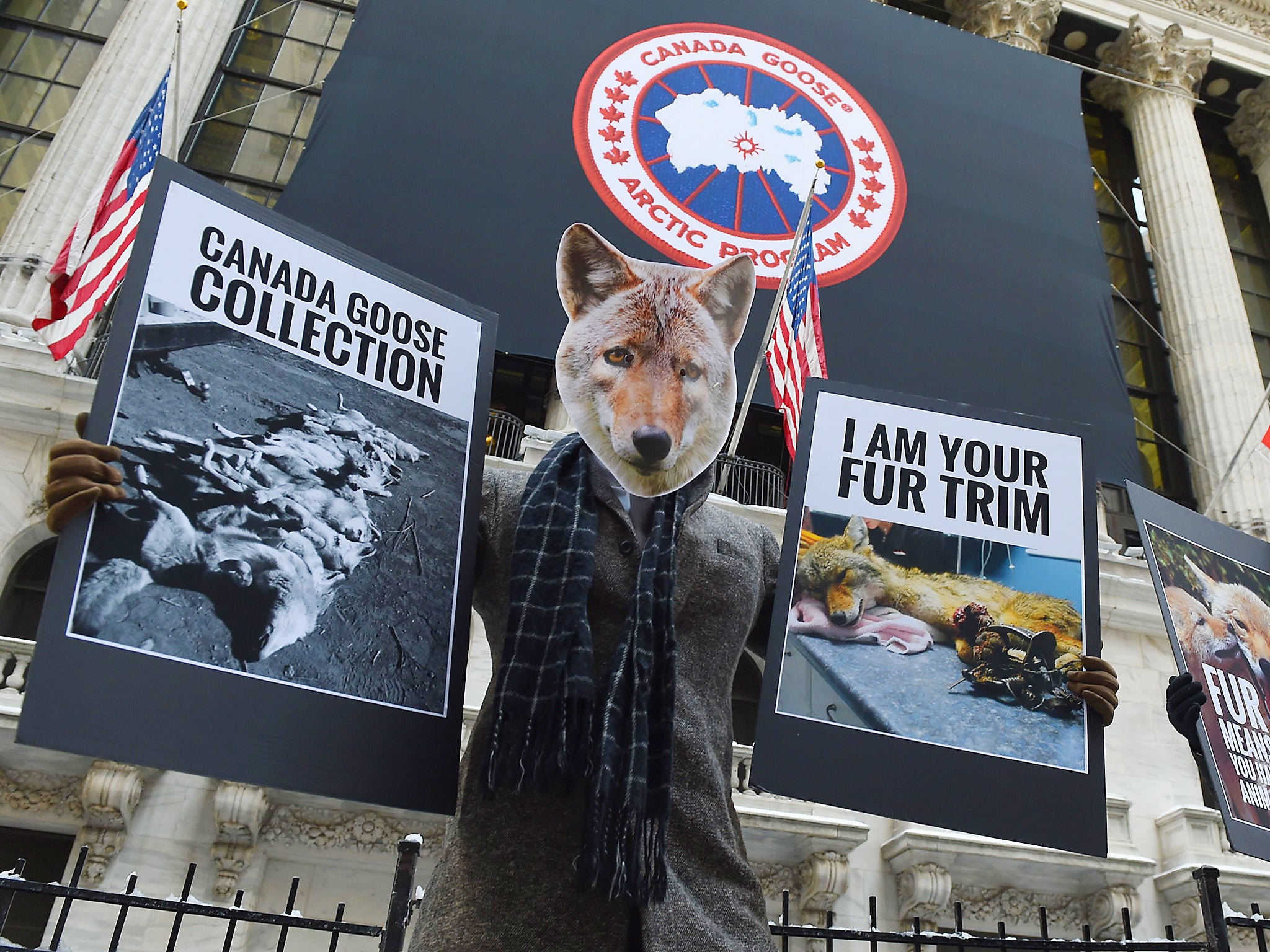The Independent's journalism is supported by our readers. When you purchase through links on our site, we may earn commission.
Canada Goose to stop using new fur in its designs
‘It means that untold thousands of coyotes will be spared from being maimed and killed,’ says Human Society International

Canada Goose’s decision to stop buying new fur to use in its products has been welcomed by animal rights campaigners.
The clothing brand, which has produced extreme outerwear for more than 60 years, has announced it will no longer buy fur from animal trappers from 2022 onwards.
Known for its coyote-fur trimmed hoods, which have been denounced by wildlife activists over the years, Canada Goose won’t be saying goodbye to fur completely though.
Instead, it has vowed to use reclaimed fur in its products, some of which will be procured via a buy-back scheme where customers can sell the company the fur collars from their coats.
“By reusing fur that is reclaimed, we’re just taking a resource that’s already sustainable and making it even more sustainable,” Dani Reiss, the Canada Goose chief executive, told the New York Times.
The move was announced as part of the high-end brand’s latest sustainability report, which also revealed other measures, including becoming carbon neutral by 2025 and eliminating plastics from its factories.
Animal welfare organisations have applauded the decision, while encouraging the company to move away from using any real fur in its apparel.
“We welcome Canada Goose’s announcement because it means that untold thousands of coyotes will be spared from being maimed and killed...though the decision to shift to reclaimed fur feels like a rather painful ‘long-goodbye’ in this company’s tired love affair with the fur trade,” said Claire Bass, executive director of Humane Society International.
“A cleaner and clearer commitment to sustainability will hopefully see Canada Goose in the near future investing in the development of bio-fake-furs, and closed-loop recycling of synthetic fur materials.”
However, that looks unlikely given the brand’s long history of using fur, despite recent controversy.
Canada Goose argues that coyote fur is a superior material for extreme-weather outerwear, as it disrupts airflow and doesn’t freeze or hold water.
Activists from organisations including PETA and People for the Ethical Treatment of Animals have been vocally denouncing Canada Goose’s use of fur for years, with high-profile protests often focused around the brand’s high-street shops.
Other companies, from high-fashion labels to high-street chains, have slowing been phasing out fur, with Chanel, Versace, H&M and Zara among those opting for synthetic alternatives.
However, some brands, such as luxury outerwear label Moncler, continue to use fur bought from animal trappers. Like Canada Goose, the company plumps for coyote fur, which is used as a detachable trim on some of its jackets.
The Independent has asked Canada Goose and Moncler for further comment.
Join our commenting forum
Join thought-provoking conversations, follow other Independent readers and see their replies
Comments
Bookmark popover
Removed from bookmarks